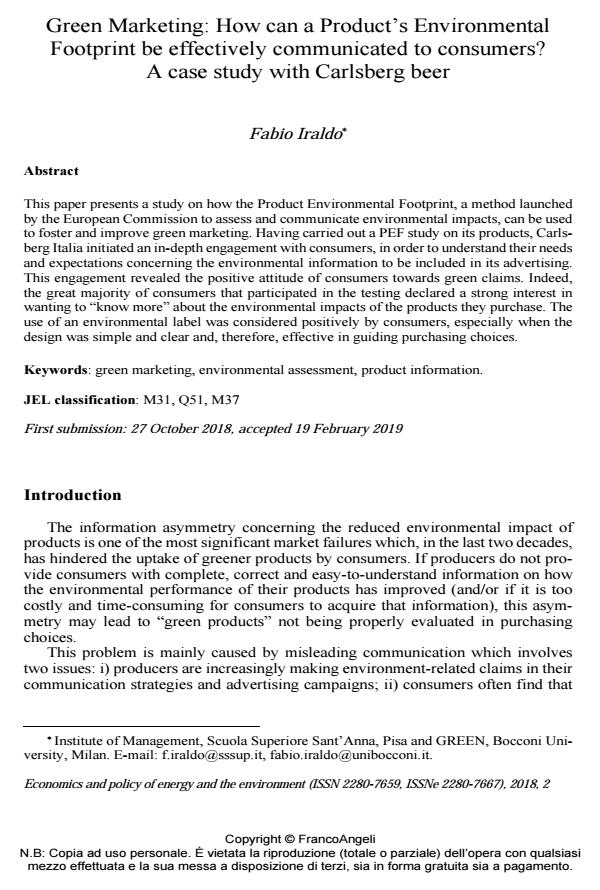Green Marketing: How can a Product’s Environmental Footprint be effectively communicated to consumers? A case study with Carlsberg beer
Titolo Rivista ECONOMICS AND POLICY OF ENERGY AND THE ENVIRONMENT
Autori/Curatori Fabio Iraldo
Anno di pubblicazione 2019 Fascicolo 2018/2
Lingua Inglese Numero pagine 20 P. 167-186 Dimensione file 427 KB
DOI 10.3280/EFE2018-002009
Il DOI è il codice a barre della proprietà intellettuale: per saperne di più
clicca qui
Qui sotto puoi vedere in anteprima la prima pagina di questo articolo.
Se questo articolo ti interessa, lo puoi acquistare (e scaricare in formato pdf) seguendo le facili indicazioni per acquistare il download credit. Acquista Download Credits per scaricare questo Articolo in formato PDF

FrancoAngeli è membro della Publishers International Linking Association, Inc (PILA)associazione indipendente e non profit per facilitare (attraverso i servizi tecnologici implementati da CrossRef.org) l’accesso degli studiosi ai contenuti digitali nelle pubblicazioni professionali e scientifiche
This paper presents a study on how the Product Environmental Footprint, a method launched by the European Commission to assess and communicate environmental impacts, can be used to foster and improve green marketing. Having carried out a PEF study on its products, Carlsberg Italia initiated an in-depth engagement with consumers, in order to understand their needs and expectations concerning the environmental information to be included in its advertising. This engagement revealed the positive attitude of consumers towards green claims. Indeed, the great majority of consumers that participated in the testing declared a strong interest in wanting to "know more" about the environmental impacts of the products they purchase. The use of an environmental label was considered positively by consumers, especially when the design was simple and clear and, therefore, effective in guiding purchasing choices.
Parole chiave:Green marketing, environmental assessment, product information.
Jel codes:M31, Q51, M37
- Challenges with product environmental footprint: a systematic review Emil Pedersen, Arne Remmen, in The International Journal of Life Cycle Assessment /2022 pp.342
DOI: 10.1007/s11367-022-02022-3
Fabio Iraldo, Green Marketing: How can a Product’s Environmental Footprint be effectively communicated to consumers? A case study with Carlsberg beer in "ECONOMICS AND POLICY OF ENERGY AND THE ENVIRONMENT" 2/2018, pp 167-186, DOI: 10.3280/EFE2018-002009